Three Reasons the Air Force Should Become the Army Air Corps Again
Women Airforce Service Pilots (WASP)
Women'southward Auxiliary Ferrying Squadron (WAFS)
DID You KNOW?
The purpose of the WAFS was to deliver planes from the factory to military bases.
Nancy Harkness Beloved, with the support of the U.S. Air Send Command, organized 25 women pilots into the Women's Auxiliary Ferrying Squadron on Sept. ten, 1942. WAFS headquarters were located at New Castle Army Air Base, Delaware; afterwards other ferrying squadron centers were established. Due to the strict qualifications for service in the WAFS, only twoscore women wore the WAFS compatible (which they had to pay for) before it was merged into the Women Airforce Service Pilots (WASP).
DID YOU KNOW?
The purpose of the WAFS was to deliver planes from the mill to military bases.
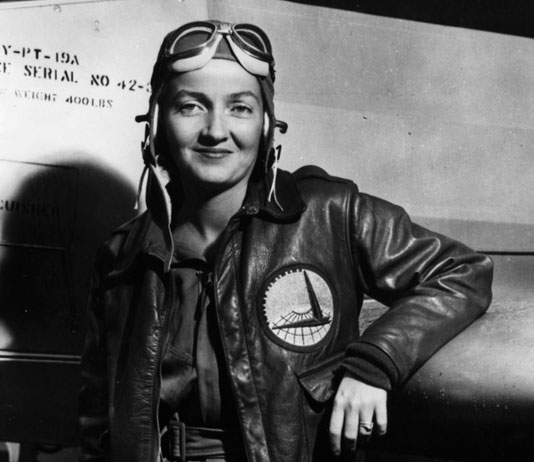
Mrs. Nancy Harkness Love, founder of the Women's Auxiliary Ferrying Squadron.
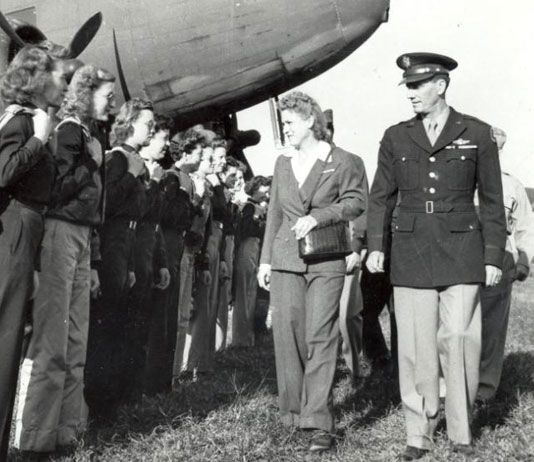
Jacqueline Cochran, founder of Women's Flight Grooming Detachment
Women's Flying Training Detachment (WFTD)
Immediately after the attack on Pearl Harbor, Jacqueline Cochran - i of the most well-known aviators of that time - tried to interest the Army Air Corps in women pilots who would be trained to fly military shipping within the United states. When that effort failed, she recruited a group of women pilots to serve in the British Air Transport Auxiliary. She accompanied them to England, then returned to the United States to recruit a second group. There, she learned the WAFS had been created and convinced Gen. "Hap" Arnold of the Army Air Corps that the WAFS would be unable to supply all the women pilots that would be needed. Both Cochran and Arnold were opposed to enrollment of women pilots in the WAC.
DID Yous KNOW?
The mission of the WFTD was to perform any flight duties the Army Air Corps required within the Us.
Cochran established the Women'due south Flight Training Detachment, or WFTD, at Howard Hughes Airdrome in Houston, Texas on Nov. 16, 1942, with an initial class of 25 women who were required to have 200 hours flying time and a commercial license.
DID YOU KNOW?
The mission of the WFTD was to perform whatever flight duties the Army Air Corps required within the United States.
In add-on to ferrying, testing and delivering planes for repair, the WFTD also performed check flights, put flying time on new engines, towed targets for anti-aircraft gunnery practice, flew searchlight tracking missions, and instructed male person pilot cadets.
Women Airforce Service Pilots (WASP)
The WAFS and WFTD merged into WASP on Aug. 5, 1943. Cochran served as manager of WASP and its training sectionalization, while Love was director of the ferrying sectionalization. In the sixteen months WASP existed, more than 25,000 women applied for training; simply 1,879 candidates were accepted. Among them, 1,074 successfully completed the grueling plan at Avenger Field - a improve "wash-out" rate than 50 percent of male airplane pilot cadets.
Cochran pressed for full militarization of WASP, just resisted making information technology part of WAC; she insisted information technology remain a women's pilot organization whose members could but be assigned to flight duties. 1 of her reasons was that WAC recruits had to exist at least 21 years one-time and could not have children under 14 (some of the WASP'due south most experienced pilots were mothers of immature children). WASPs were accustomed as immature as 18 if the woman had a airplane pilot'south license and flight experience.
Arnold asked Gen. William East. Han, deputy main of the Air Staff, for permission to commission into WASP directly every bit service pilots, a procedure the Air Ship Control used routinely with male civilian pilots. The Comptroller General of the Ground forces Air Forces ruled against these practices on Jan. 13, 1944.
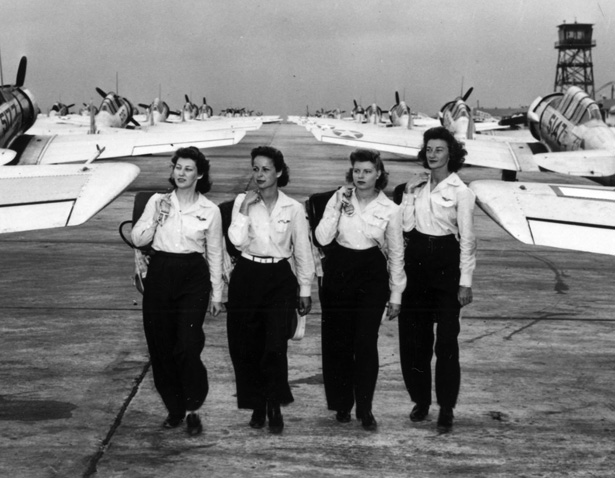
Women Airforce Service Pilots (U.S. Air Force photo)
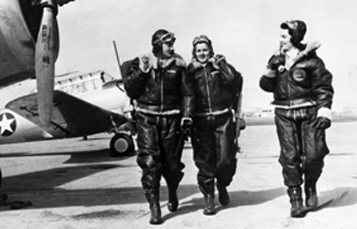
Women Airforce Service Pilots (U.S. Air Force photo)
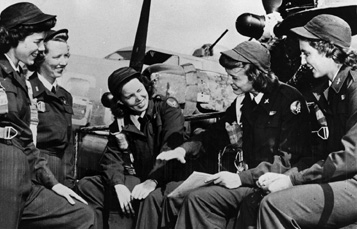
Women Airforce Service Pilots (U.S. Air Force photo)
Then, Cochran and Arnold went dorsum to Congress, where a bill (H.R. 4219) to make WASP a women'southward service within the U.S. Regular army Air Force had been ignored since its introduction in September 1941. On June 21, 1944, it was defeated by 19 votes, despite vigorous lobbying efforts.
The WASPs were disbanded on December. twenty, 1944. Amold's letter of notification to WASPs stated, "When we needed you lot, yous came through and have served most commendably under very hard circumstances, but now the war situation has changed and the fourth dimension has come when your volunteer services are no longer needed. The situation is that if you go along in service, you will be replacing instead of releasing our immature men. I know the WASP wouldn't want that. I desire you to know that I appreciate your war service and the AAF volition miss you..."
WASP receive veterans status
More 3 decades later, on Sept. 20, 1977, a select House subcommittee on veteran diplomacy heard testimony on H.R. 3277, a bill which recognized WASP service equally active duty in the armed forces and entitled them to veterans' benefits. It was strongly supported past both houses of Congress and Sen. Barry Goldwater, who had flown with WASP during World War II; he led the move to get the bill passed. The bill was vehemently opposed by the American Legion on the grounds that it "would denigrate the term 'veteran' then that it will never again have the value that presently attaches to it." Controversy went back and forth, with the Veterans Administration opposing the bill and the Section of Defence supporting information technology.
Goldwater attached the bill as an amendment to the "GI Bill Improvement Act" (H.R. 8701), Oct. nineteen, 1977, but the committee chairs planned to strip the WASP amendment during the reconciliation process. This prompted ii women representatives of the House, Rep. Margaret Heckler and Rep. Liddy Boggs, to take activity in back up of the WASP subpoena.
A compromise was finally reached that if the Air Forcefulness would certify that the WASP had been de facto military personnel during the war, the WASP amendment would not exist stripped. The Air Force certified the WASP, and in making their determination used the discharge papers of WASP Helen Porter, 1944, which read, "This is to certify that Helen Porter honorably served in agile federal service of the Ground forces of the United States." It was the same wording used in 1944 for all honorable discharges from the Army. H.R. 8701, as amended, passed the Business firm with unanimous consent. President Carter signed the nib into constabulary, November. 23, 1977.
Source: https://www.army.mil/women/history/pilots.html
0 Response to "Three Reasons the Air Force Should Become the Army Air Corps Again"
Post a Comment